General William Palmer Statue
Introduction
Text-to-speech Audio
Images
General William Palmer Statue as it looks today
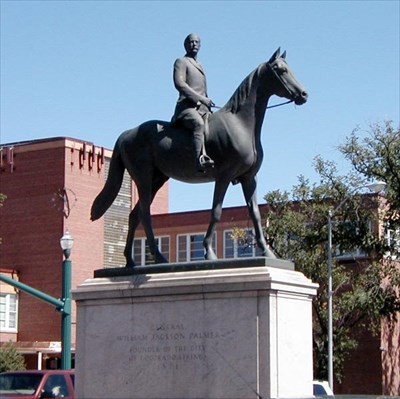
Captain William Palmer in 1861
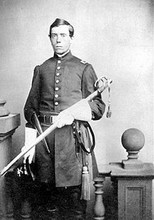
General William Palmer Statue circa 1930s
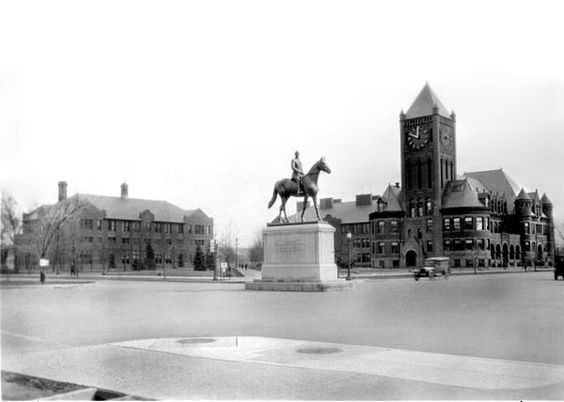
General William Palmer gravesite in Colorado Springs Evergreen Cemetery
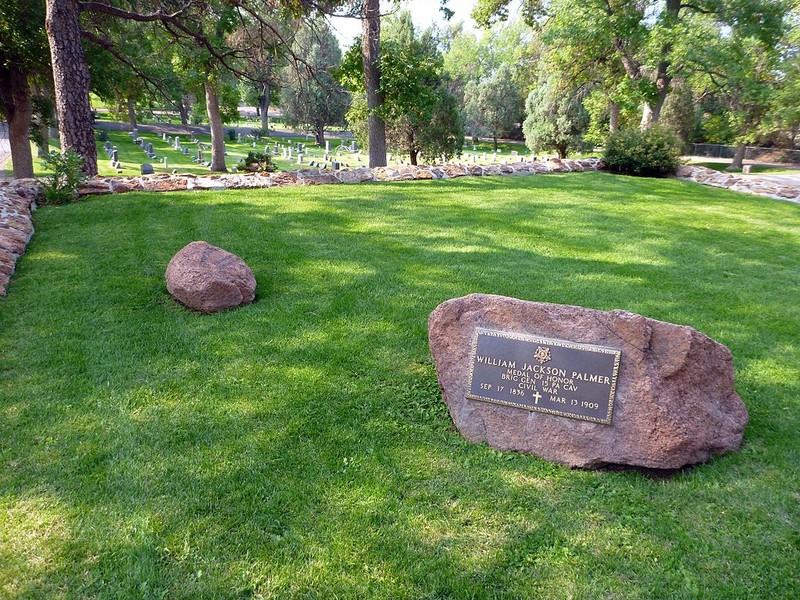
General William Palmer Statue circa 1930s
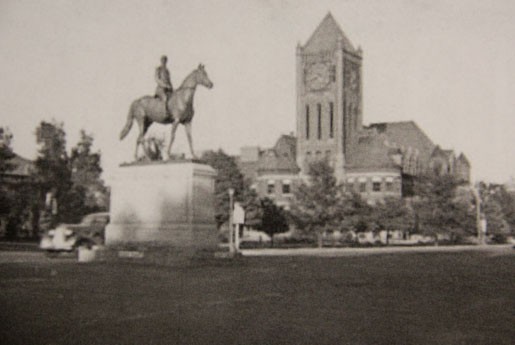
General William Palmer circa 1870
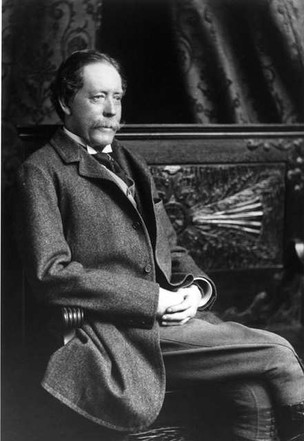
Backstory and Context
Text-to-speech Audio
"Making a left-hand turn in traffic is always a chancy thing. There are many factors of which the driver must be aware: the speed of the oncoming vehicles, the amount of traffic at the intersection, the possibility of pedestrians crossing. In such cases, the operator of the automobile should have a clear and unimpeded view of all movement before proceeding. The cautious driver may want to make a series of right-hand turns instead of attempting the left-hand turn. It will take more time, use more fuel, but perhaps make the difference between arriving at the destination safely or winding up in traffic court with increased insurance premiums. It is up to the driver to decide. Some intersections in our city are more prone to this kind of accident than others. There is one that has been the topic of conversation, both public and private, for over eighty years because of this very problem. It is located where Platte and Nevada Avenues cross. These roadways are both busy ones. They meet in the downtown center of our city. Our oldest high school is located on one corner and diagonally across this intersection is the popular Acacia Park. Both Platte and Nevada are lined with shops, churches, and recreational buildings that are well patronized. The fact this area is heavily used by people using all modes of transportation is not the reason usually given for the mishaps that often occur. There is another factor involved. It is a large bronze statue of a horse and rider atop a granite pedestal in the center of the street. "Who is this person?" and "What is he doing here?" are questions most frequently asked by upset motorists. The answers are, he is General William Jackson Palmer and he is being perpetually honored as the founder of Colorado Springs.
In 1909, General Palmer died at his home in Glen Eyrie after several years of deteriorating health caused by an injury he suffered while horseback riding in the Garden of the Gods. The importance of Palmer to his town, and the loss felt by its inhabitants at his passing, can not be overstated. Almost immediately plans were initiated to erect a permanent structure honoring the man and his achievements. Although started by the area’s early pioneer families and Palmer’s personal friends, the public embraced this endeavor and within a few years thousands of dollars were raised toward the cost of the memorial. The plans for the Palmer statue were placed on hold during World War I, when the money already collected was turned into Liberty Bonds to support the war effort. It wasn’t until the spring of 1922 that the Palmer Memorial Association (PMA) was reformed under new leadership, and the work started thirteen years earlier began anew. It would take the rest of the decade to complete.
In the May 30th 1922 edition of the Colorado Springs Gazette, the new association under W.F. Slocum announced the intention of raising money, adding to the previous amount collected, for the concrete support of the pedestal. The eighteen-member committee worked quickly during the following months, and by November had decided upon the type of memorial, the materials to be used, the area of town for its placement, and the sculptor who would create the work. Miss Anne Hyatt, a New York artist, submitted the winning design and was awarded a contract. The proposed memorial would be a bronze equestrian statue of the young Palmer upon his favorite mount Diablo looking towards Pikes Peak. This would rest upon a granite block. While the concept of the statue would remain the same, criticism of the work caused Mrs. Huntington (nee Hyatt) to resign in December 1923. Complaints included the age portrayed of the General, and the breed of his horse. In the summer of 1924 Nathan D. Potter, another New York sculptor, was chosen by the PMA to begin work on the statue. The completion date was estimated as August 1925.
During July of 1924, the same month that the Gazette reported the selection of Mr. Potter, the proposed location of the memorial came under attack in print. The intersection of Platte and Nevada Avenues had been suggested by the PMA due to the view of Pikes Peak from that spot and because it was a place that Palmer himself had deemed special to the town. A public vote sealed the decision. By the early nineteen twenties automobile usage had increased to such a degree an auto club was formed in town. It was this group that publicly complained about the site of the statue and the traffic problems that would ensue. The debate has continued until the present day. The Colorado Springs Auto Club repeatedly brought their arguments before the community, using data from both local and other cities’ traffic studies to support their claims. They offered financial support if the statue was erected elsewhere and refused it if not. Their efforts failed to convince the PMA and the local citizens, and the original plans proceeded.
Money continued to be a problem. The initial cost of the memorial was estimated at $20,000, but by the mid-twenties had increased in excess of $30,000. In the late summer of 1925 a ‘Something From Everyone’ campaign began in the city to raise the difference. Every man, woman and child was encouraged to donate what they could afford to the project. No gift was too small or pledge too great. Letters were sent to local businesses appealing to civic pride. Informative talks, reminding the public of General Palmer’s generosity to the city, were given at luncheon meetings and during intermissions at motion picture houses. The Boy Scouts helped distribute literature door to door. In this manner, the remainder of the funds needed was acquired.
After many delays and missed deadlines, by the summer of 1929 all the aspects of the project were falling into place. A local contractor had completed the supporting concrete slab three years earlier. The granite base shipped from Connecticut was already installed. The planned festivities were publicized in the newspaper even as the progress of the statue was reported. Its arrival was scheduled for August 29, 1929. The statue would be dedicated and presented to the city four days later.
Thousands were on hand to share in the celebration on the morning of September 2nd. The General’s friends were evident both on and off the speakers’ platform. Dr. William F. Slocum, professor emeritus of Colorado College, and former Colorado governor, Oliver H. Shoup, spoke about Palmer’s life. The last known surviving member of Palmer’s Civil War Company B 15th Pennsylvania cavalry was present. Mr. Fry had traveled from West Virginia to honor his war time commander. Pioneer families and newcomers alike filled the roped off areas on Nevada from Boulder to Bijou and on Platte from Weber to Nevada. The Boy Scouts acted as ushers. The municipal band played musical themes celebrating the spirit of the west. Radio station KFUM provided amplification for the crowd gathered at the site, and broadcast the ceremony to the audience listening at home. At 11AM the music stopped, the speeches began, Mr. Van Diest of the PMA gave the memorial to the City of Colorado Springs, and Mayor Birdsall accepted on behalf of its citizens. Eight-year old Anne Fiske Jackson, whose father William had been named in honor of Palmer, pulled the cord to undrape the statue. The twenty-year mission was over.
The discussion about Palmer’s memorial is not. Whether the news is about the latest rival high schools’ painting of a ‘W’ on Diablo, or the cost of refurbishing the statue, the conversation usually turns to the practicality of its location. Back in 1929, when the memorial was new, it was estimated that it would cost $26,000 to move. One can only imagine what the cost would be in today’s dollar. Even if the amount is available, it is doubtful that the statue could be moved without damaging the base. It is set in twenty tons of concrete and is fastened to the street by two iron prongs. Drivers beware. General Palmer and his horse are here to stay."
Cite This Entry
Emett , Mike. "General William Palmer Statue." Clio: Your Guide to History. January 3, 2017. Accessed August 20, 2025. https://theclio.com/tour/1108/2/reverse
Sources
- John Stirling Fischer (1939). A Builder of the West: The Life of William Jackson Palmer. Caldwell, Idaho: Caxton Printers.

